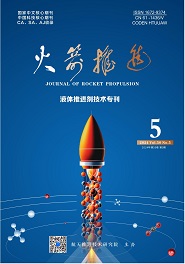航天推进技术研究院主办
JI Yu,MAO Chenrui,SUN Jun,et al.Analysis and design of system cycle for nuclear thermal rocket engine[J].Journal of Rocket Propulsion,2022,48(01):14-21.
核热火箭发动机系统循环方案分析与设计
- Title:
- Analysis and design of system cycle for nuclear thermal rocket engine
- 文章编号:
- 1672-9374(2022)01-0014-08
- 分类号:
- V439.5
- 文献标志码:
- A
- 摘要:
- 核热火箭发动机是未来实现载人火星探测的首选动力方案,其具备高比冲、大推力和长工作寿命等优点。我国在此方面研究较少,亟需开展核热推进技术理论及方法的研究。核热火箭发动机系统循环分析与设计是关键问题之一,对推进系统总体设计有重要意义。分析了3种可用于核热火箭发动机系统循环的方案特点,基于闭式膨胀循环设计了比冲为910 s 的氢气核热推进系统和比冲为390 s的氨气核热推进系统方案,对比发现氢气系统更适合于载人深空探测,而氨气系统在推进剂长期在轨储存和对涡轮泵及反应堆的设计要求等方面有一定的优势,可胜任轨道高度变化相对较小的长期多次空间探测任务,作为液氧甲烷发动机的补充和替代。此外,结合设计过程以及核火箭发动机与化学火箭发动机的差异,围绕系统循环分析与设计提出了几点研究内容,为我国核热推进系统的发展提供参考。
- Abstract:
- Nuclear Thermal Propulsion(NTP)is a leading candidate for manned Mars exploration,which offers the advantages of high specific impulse,high thrust and long sustained lifetime for propulsion technology. Due to the limited research in China,it is desiderated to promote the related studies on the theory and methods about NTP. System cycle analysis is one of the major problems,which significantly benefits the overall design of the propulsion system. In this work,the principles,pros and cons of three main cycles for NTP engine were analyzed. Based on the closed expansion cycle,a hydrogen NTP system with Isp being 910 s and another ammonia NTP system with Isp being 390 s were designed. Further,the merits and faults of these two systems were also analyzed,which indicated that the H2 NTP system is more suitable for manned deep space exploration. For the NH3 NTP systems,it has advantageous in long-term in-orbit storage of propellant,design difficulty of turbo-pump and nuclear reactor. And it could serve as the substitution of liquid methane oxide engine,being qualified for the long-term and multiple exploration missions with relatively small orbit altitude change. In addition,combining the design procedure and the difference between the cycles of NTP engine and that of chemical engine,several key fundamental issues related to cycle design were proposed,which could provide references for the R&D of NTP engine in our country.
参考文献/References:
[1] MINDELL D,UEBELHART S A,SIDDIQI A A. The future of human space flight:Objectives and policy implications in a global context[EB/OL].https://www.sciencedirect.com/science/article/pii/S0265964609001349?via%3Dihub,2009.
[2] 欧阳自远,李春来,邹永廖,等.深空探测的进展与我国深空探测的发展战略[J].中国航天,2002(12):28-32.
[3] 王浩明,薛翔,张银勇,等.空间闭式布雷顿循环旁路调节特性分析[J].火箭推进,2021,47(2):61-67.
WANG H M,XUE X,ZHANG Y Y,et al. Analysis of bypass regulation characteristics for space closed Brayton cycle system[J].Journal of Rocket Propulsion,2021,47(2):61-67.
[4] 朱安文,刘磊,马世俊,等.空间核动力在深空探测中的应用及发展综述[J].深空探测学报,2017,4(5):397-404.
[5] 苏著亭,杨继材,柯国土. 空间核动力[M].上海:上海交通大学出版社,2016.
[6] CLARK J S,MCDANIEL P,HOWE S,et al. Nuclear thermal propulsion technology:Results of an interagency panel in FY 1991[EB/OL].https://www.researchgate.net/publication/236433262_Nuclear_thermal_propulsion_technology_Results_of_an_interagency_panel_in_FY_1991,1993.
[7] DRAKE B G,HOFFMAN S J,BEATY D W. Human exploration of Mars,design reference architecture 5.0[C]//2010 IEEE Aerospace Conference. New York:IEEE,2010.
[8] National Academies of Sciences,Engineering,and Medicine. Space nuclear propulsion for human mars exploration[R].Washington D C:The National Academies Press,2021.
[9] “中国工程科技2035发展战略研究”项目组. 中国工程科技2035发展战略:公共安全领域报告[M].北京:科学出版社,2020.
[10] 解家春,霍红磊,苏著亭,等.核热推进技术发展综述[J].深空探测学报,2017,4(5):417-429.
[11] 吉宇,孙俊,石磊. 核热推进系统热工过程及堆芯关键技术分析[J].原子能科学技术,2017,51(12):2171-2176.
[12] EMRICH W. Principles of nuclear rocket propulsion[EB/OL].https://www.researchgate.net/publication/316133318_Principles_of_Nuclear_Rocket_Propulsion,2016.
[13] 王浩泽,左安军,霍红磊,等.110 kN核热火箭发动机系统方案选取与参数优化研究[J].原子能科学技术,2019,53(1):30-37.
[14] HASLETT R A. Space nuclear thermal propulsion program[R].New York:Grumman Aerospace Corporation,1995.
[15] SELCOW E C,DAVIS R E,PERKINS K R,et al. Assessment of the use of H2,CH4,NH3,and CO2 as NTR propellants[C]//AIP Conference. Albuquerque:AIP,1992.
[16] 蔡国飙,李家文,田爱梅,等.液体火箭发动机设计[M].北京:北京航空航天大学出版社,2011.
[17] HESS H L,KUNZ H R. A study of forced convection heat transfer to supercritical hydrogen[J].Journal of Heat Transfer,1965,87(1):41-46.
[18] 廖宏图. 核热推进技术综述[J].火箭推进,2011,37(4):1-11.
LIAO H T. Overview of nuclear thermal propulsion technologies[J].Journal of Rocket Propulsion,2011,37(4):1-11.
[19] 郭尚群,侯辉,张勇. 萤火一号火星探测器推进分系统技术[J].上海航天,2013,30(4):96-99.
[20] NIKITAEV D, THOMAS L. In-situ alternative propellants for nuclear thermal propulsion[C]// AIAA Propulsion and Energy 2021 Forum. Reston, Virginia: AIAA,2021.
[21] JOYNER II C R, DEASON W, EADES M, et al. LEU NTP engine system for flight demonstrator for a mars crew mission NTP[C]// Nuclear and Emerging Technologies for Space 2020, Knoxville, Tennessee:[s.n.],2020.
[22] 李强,李家文,王戈,等.新型空间双模式核热推进系统热力学性能研究[J].火箭推进,2018,44(6):21-28.
LI Q,LI J W,WANG G,et al. Research on the rmodynamic performance of a new aerospace nuclear thermal propulsion system[J].Journal of Rocket Propulsion,2018,44(6):21-28.
相似文献/References:
[1]郭 敬,张 佳,李 茂,等.高模试验补氧燃烧过程仿真[J].火箭推进,2019,45(06):17.
GUO Jing,ZHANG Jia,LI Mao,et al.Simulation of oxygenating combustion process in altitude simulating test for large thrust hydrogen/oxygen rocket engine[J].Journal of Rocket Propulsion,2019,45(01):17.
[2]马晓秋,解家春.核热火箭发动机研制进展与关键技术[J].火箭推进,2024,50(04):1.[doi:10.3969/j.issn.1672-9374.2024.04.001]
MA Xiaoqiu,XIE Jiachun.Development progress and key technologies of nuclear thermal rocket engine[J].Journal of Rocket Propulsion,2024,50(01):1.[doi:10.3969/j.issn.1672-9374.2024.04.001]
备注/Memo
收稿日期:2021-07-11; 修回日期:2021-08-13
基金项目:博士后面上基金(2020M680586); 清华大学“水木学者”计划项目(2020SM057)
作者简介:吉宇(1994—),男,博士,助理研究员,研究领域为核热推进技术。
